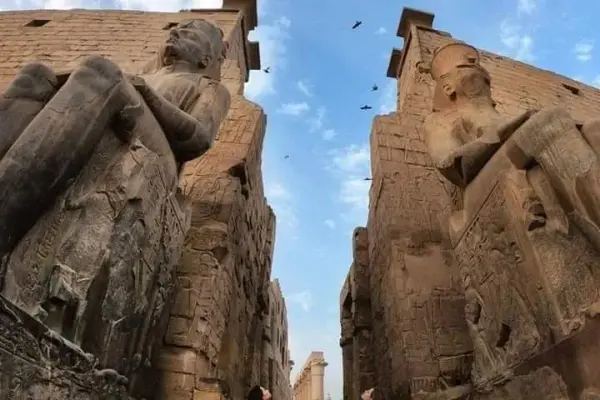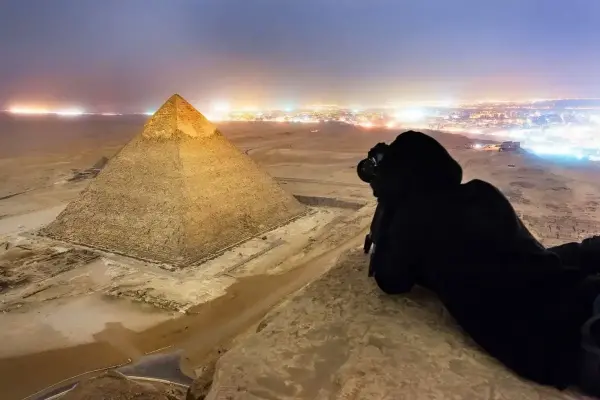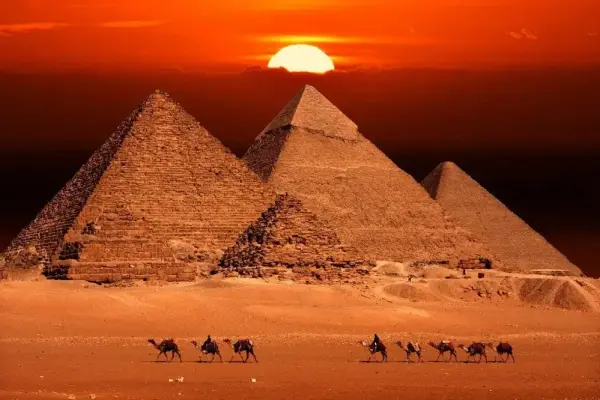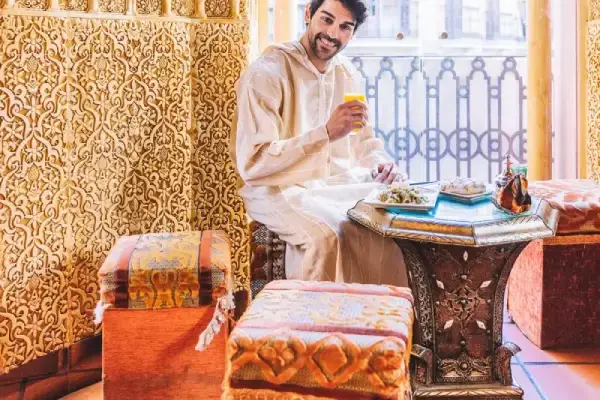Table of contents [Show]
Interesting Facts About The Eye Of Horus
This is based on ancient Egyptian mythology, and the Eye of Horus was a representation of protection, royal authority, and good health. The solar deity Ra is related to the eye, which is embodied in the goddess Wadjet. Today's pagans and occultists utilize the Eye of Horus as a symbol. The ancient Egyptians used it as a strong protective amulet. In this blog post, we'll look into the Eye of Horus's origins, symbolic significance, and relevance to Egypt tours of ancient artifacts. We will try to connect this history with the tourist attractions in Egypt by talking about some fascinating facts about this ancient emblem and its relationship to contemporary paganism and occult societies.
Eye of Horus legend
Ancient Egyptians used the Eye of Horus as a sign of strength and protection. As a lucky charm, the eye was usually painted on the boat's bow. The Wedjat, which in Egyptian means "full eye," is another name for the Eye of Horus. The Eye of Horus has a complicated symbolism that stands for many different things. As you stroll through any Egyptian market, such as the Khan El Khalili Tour, you will see that it is filled with antiquities, the majority of which are silver and gold accessories for the eye of Horus. The Horus eye sign may be seen everywhere in Egypt, including in shops, museums, and the temples of Luxor and Aswan day tours .
The Eye of Horus is first and foremost a symbol of regal and heavenly power. The eye was equated with the all-seeing ability that the Egyptians thought the gods had. Another claim linking the moon to regal authority and divine might is that it is the Eye of Horus. In one of our Luxor day tours to the Horus temple, you will cruise the Nile to take part in the Edfu tour from Luxor and see the temple of Horus while hearing the legend of the eye of Horus from our knowledgeable tour guide.
The second thing the Eye of Horus stands for is recuperation and renewal. Horus, a divinity in ancient Egyptian mythology , lost an eye in a conflict with Set. A different deity did, however, restore his sight, and this act of healing was viewed as a sign of renewal and hope. The Eye of Horus also stands for safety. The Egyptians had a strong belief that the eye would defend them from evil spirits and provide them with courage when things became tough.
The Eye of Horus is an important emblem in ancient Egyptian culture, as you can see, and you will hear many tales about it throughout your Egypt classic tours . To various individuals, it meant many different things, but in general, it meant healing, power, and protection.

The Horus Eye (Wedjat or Udjat)
Ancient Egyptians used the Eye of Horus as a representation of safety, regal authority, and good health. The Egyptian name Horus means "the far one," and the eye represented the sun god's ability to observe all that took place in his realm. The word wedjat or udjat, which means "whole" or "healthy," is another name for the eye. Join one of our Egypt luxury tours to go on a trip through the country's fascinating past, which is filled with lore and mystery.
People frequently employed the Eye of Horus as a talisman or amulet to ward against harm. It was thought that individuals who wore the eye would get protection and good fortune from the deity Horus. The Eye of Horus was frequently painted on tombs, boats, and walls in ancient Egypt in order to ward off bad spirits. In order to transfer you to the Pharaonic era and further illuminate the knowledge included in the package of Luxor secrets, our Egypt spiritual tours have since expanded to encompass the Pharaonic temples and have created a safe environment for you.
The goddess Wadjet, a guardian of Lower Egypt, is closely linked to the Eye of Horus. Her eyes were thought to have the ability to ward against evil, and she was frequently portrayed as a cobra or lioness. With our Egypt budget tours , you can see it etched on the majority of the temples in Luxor and Aswan to safeguard them.
Over the years, the Eye of Horus has been put to use in a variety of ways. Today, it may be seen in tattoos, clothes, jewelry, and other accessories.
Ancient Egyptians used the Eye of Horus as a sign of kingly majesty and authority. It frequently appears as a guardian eye fending off bad spirits in literature and art. Because it was thought to have the ability to heal illnesses and restore health, the Eye of Horus is also a symbol of healing and restoration. Join a 10-day luxury vacation on the Nile Cruise that includes a day trip to the Edfu Temple in Luxor.
The funeral amulet with the Eye of Horus
The Eye of Horus was frequently worn as a sarcophagus amulet. It was believed that it would safeguard the deceased in the afterlife and direct them to the Duat, the Egyptian underworld. It is said that the "Eye of Ra," another name for the Eye of Horus, resembles a sun with rays emanating from it. The Eye of Horus was associated with healing and regeneration, and it was said to have the ability to regrow lost limbs and organs. During one of our 8-day classic tours to Luxor, you may see the Valley of the Kings , where every king's tomb has its symbol engraved on it.
It makes sense why the Eye of Horus has served as a strong symbol for so long. This ancient Egyptian fortunate symbol still serves as a symbol of power, healing, and protection today. Whether you're looking for a tattoo design or just want to learn more about this amazing image, we hope you found these fascinating facts about the Eye of Horus to be helpful.





